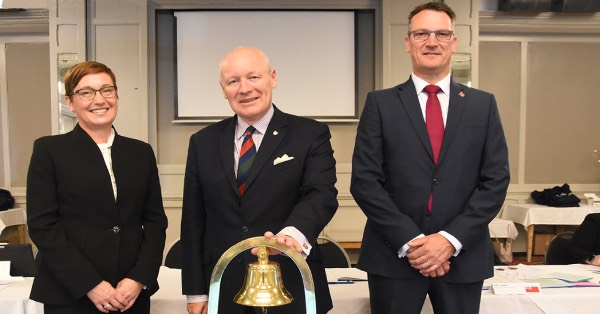Shipping is about to experience its latest round of emission reduction this coming January and already some trouble could arise as things could get tricky between ship owners and charterers. In its latest weekly report, shipbroker Gibson said that “the IMO’s carbon intensity indicator (CII) and Energy Efficiency Existing Ship Design Index (EEXI) will come into effect on 1st of January 2023. These measures form a key part of the IMO’s strategy to lower CO2 emissions from the industry. However, as is sometimes the case with regulation, unintended consequences can arise, which could in the short-term increase inefficiency of the fleet until industry practices adopt, or older vessels are removed from trading. Indeed, regulation also sometimes fails to account for commercial practices which are not always compatible with technical directives from the IMO”.

Source: Gibson Shipbrokers
According to Gibson, “from a commercial standpoint, EEXI is more straightforward to implement because compliance sits firmly with the owner. It is the owner’s obligation to ensure the vessel complies with the reference line and make technical/design amendments to the vessel if compliance is not met. CII is commercially more complex as it concerns how the vessel is traded. Under a spot voyage, it is the owner’s obligation to manage the vessel’s performance to attain the CII rating the owner desires. However, under a time charter, the situation could be much more complex. Given that CII ratings are retrospective, a vessel on time charter could be traded inefficiently and returned to the owner with an inferior rating, putting the owner at a commercial disadvantage following the charter. From a charterer’s perspective, whilst CII is an operational measure and can be managed through trading patterns, the CII performance of a ship is linked to other factors, such as design, maintenance and warranted fuel consumption. If any of these factors is not as described in the charter party, then a dispute is likely to arise”, the shipbroker noted.
Gibson added that “the biggest issue with CII, however, is that vessels will have to adjust their trading patterns to attain the required rating and the IMO will argue that this is exactly the point. However, a non eco ship, which would typically trade shorter voyages, will now be more likely to engage in longer haul voyages to attain the required CII, which is largely a function of CO2 emitted, cargo capacity and importantly, distance sailed. Likewise, eco ships with much better CO2 emissions could be deployed on shorter voyages where, despite smaller distances, could still attain an acceptable CII rating due to their fuel efficiency. Overall, the net effect in these circumstances could be higher total CO2 emissions for the tanker sector and exactly the opposite of what the IMO is trying to achieve, at least in the short term”.

“On a longer-term basis of course, older less efficient vessels will see reduced trading opportunities and may eventually face pressure to scrap, with the replacement leading to improved operational and design efficiency across the fleet. It is also hoped that CII will force owners and charterers to squeeze as much operational efficiency out of their fleets as possible. However, for this to be realised, operational and commercial practices may need to change, notably around sailing speeds, demurrage and scheduling”, the shipbroker said.
“Ultimately, few question the industry’s need to reduce emissions; however, future regulations must avoid unintended consequences and be sensitive to industry practices, which will take time to evolve. Only steps which lead to a net reduction in emissions should be taken forward and regulation should avoid encouraging non eco vessels to engage in long voyages over eco tonnage. CII will distort trading patterns and could lead some vessels to emit more CO2 than they would have prior to the regulations in order to chase a rating. Only time will tell whether CII has the desired effect or creates unintended consequences”, Gibson concluded.
Nikos Roussanoglou, Hellenic Shipping News Worldwide








